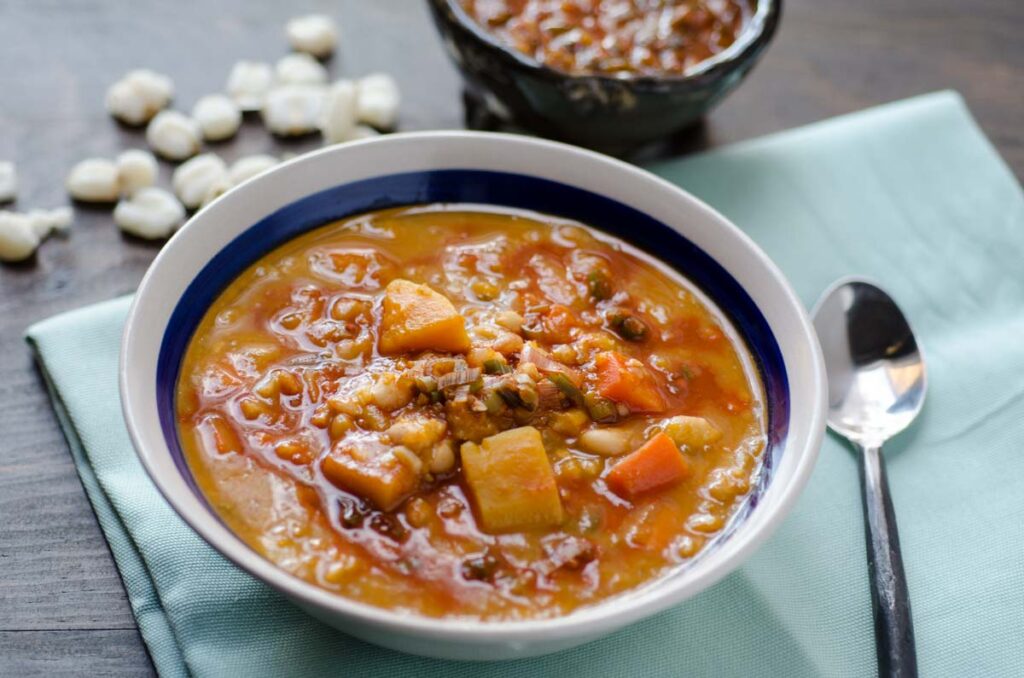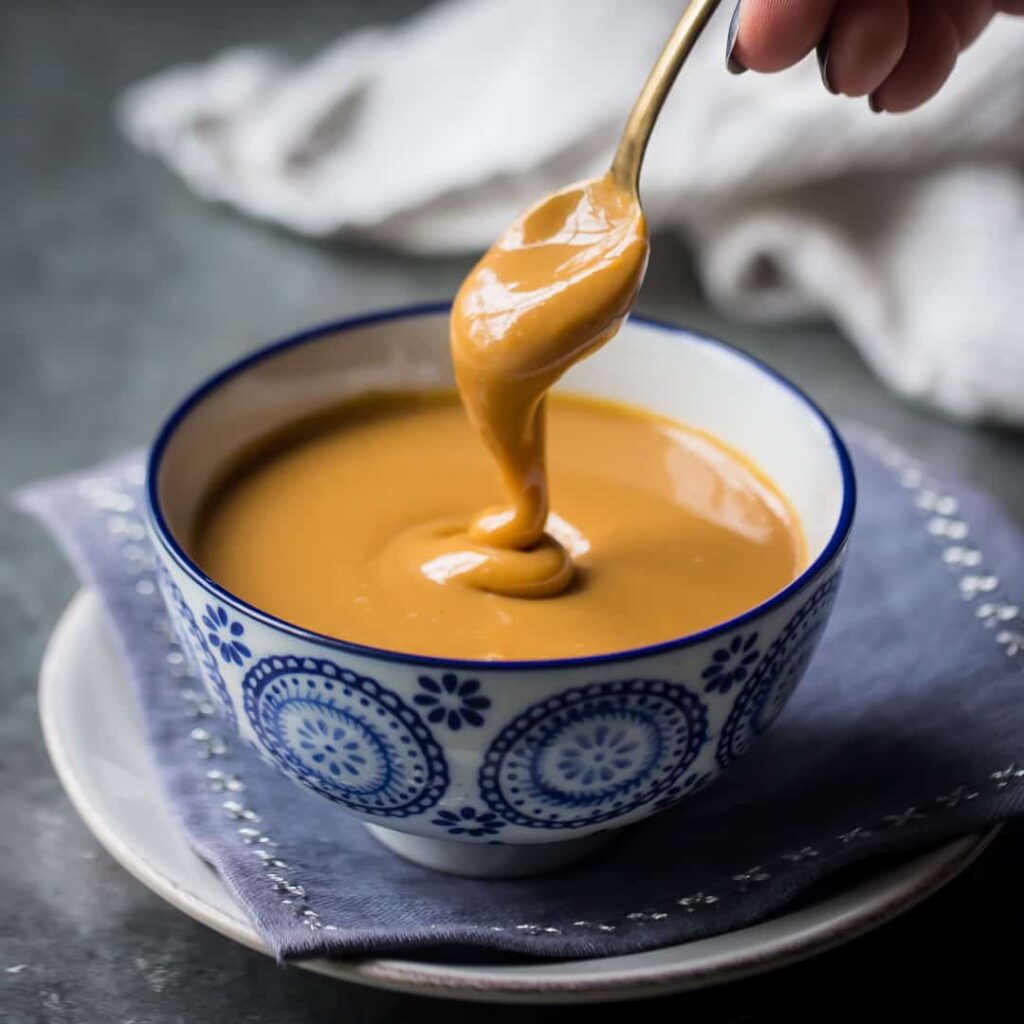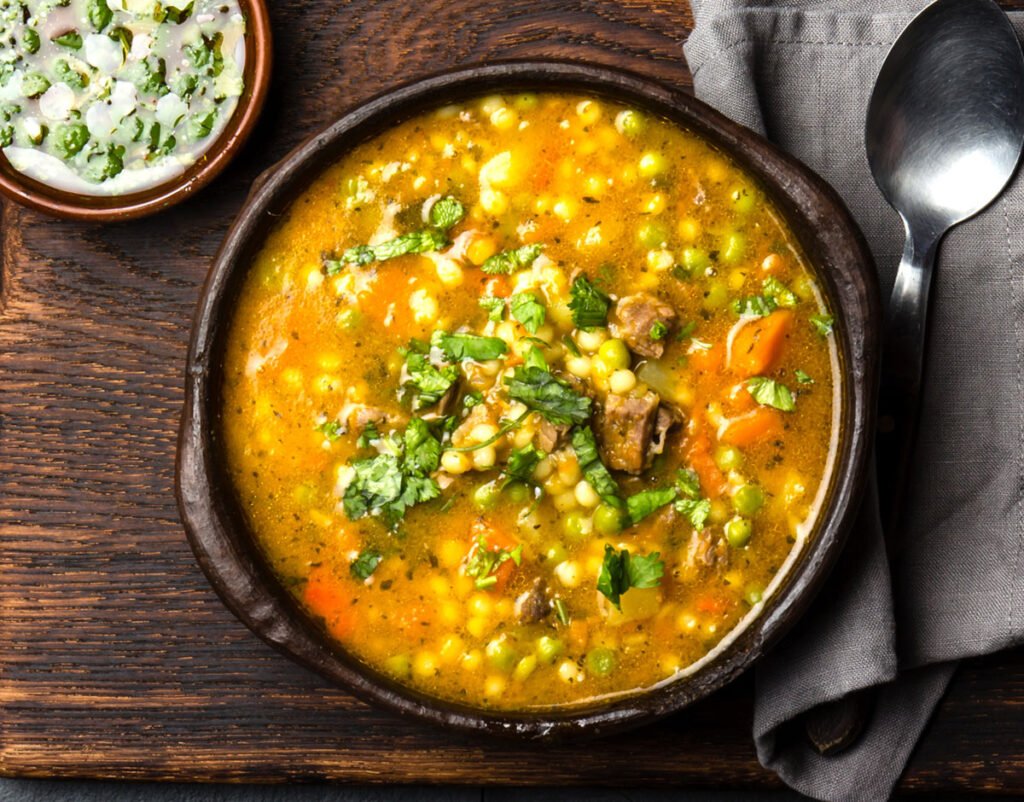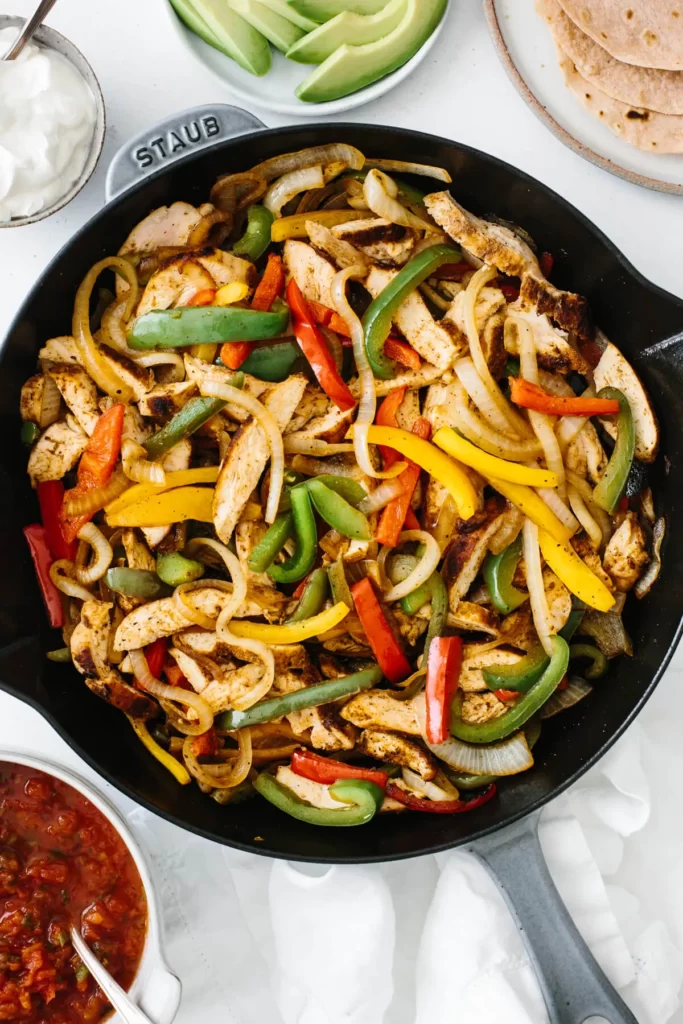Tarta de Jamón: The Classic Ham and Cheese Tart of Argentina

One of Argentina’s most beloved dishes is tarta de jamón y queso, or ham and cheese tart. This savory pastry is a staple of Argentine cuisine and is enjoyed by both locals and visitors alike. In this post, we will explore the history of tarta de jamón y queso, as well as provide a recipe and cooking instructions so you can make it at home. The History of Tarta de Jamón y Queso Tarta de jamón y queso has its roots in the French quiche, which was introduced to Argentina by French immigrants in the 19th century. Over time, the dish evolved to incorporate local ingredients and flavors, such as ham and cheese. Today, tarta de jamón y queso is a staple of Argentine cuisine and is served in homes, restaurants, and cafes throughout the country. It is often enjoyed as a quick and easy meal or snack, and is especially popular for breakfast or lunch. Recipe for Tarta de Jamón y Queso Tarta de Jamón y Queso Ingredients: Tarta de Jamón y Queso Instructions: Tarta de Jamón y Queso Cooking Time Tarta de jamón y queso takes about 10-15 minutes to prepare and 35-40 minutes to bake. The key to a successful tart is to make sure that the filling is fully cooked and set before removing it from the oven. To test if the filling is done, insert a toothpick into the center of the tart. If it comes out clean, the tart is ready. Variations on Tarta de Jamón y Queso While tarta de jamón y queso is traditionally made with ham and cheese, there are many variations on this classic dish. Some chefs add onions or peppers to the filling, while others use different types of cheese or meat. Another popular variation is to make mini tarts instead of a large one. These are perfect for parties or as a snack, and can be made using a muffin tin or mini pie dishes. Tarta de Jamón y Queso Conclusion Tarta de jamón y queso is a delicious and versatile dish that is perfect for any meal of the day. By following the recipe and cooking instructions provided in this post, you can easily create your own version of this classic Argentine dish. And by experimenting with different fillings and seasonings, you can put your own spin on it and make it your own. So why not give it a try and experience the flavors of Argentina for yourself? More Latin American Recipes More Argentinian Recipes Follow Us on Instagram
Provoleta: The Sizzling Grilled Cheese of Argentina

Argentina is a country known for its delicious and unique cuisine, and one dish that stands out is provoleta. This popular dish is made with a type of cheese called provolone, which is a semi-hard cheese with a mild, smoky flavor. Provoleta is typically grilled or pan-fried, and is often served as an appetizer or side dish. In this post, we will explore the history of provoleta, as well as provide a recipe and cooking instructions for this delicious dish. The History of Provoleta Provolone cheese was brought to Argentina by Italian immigrants in the late 19th and early 20th centuries. The cheese quickly became popular in Argentina, and was used in a variety of dishes. Provoleta, however, is a more recent creation. It is believed to have originated in the city of Buenos Aires in the 1960s, and quickly spread throughout the country. Today, it is a staple of Argentine cuisine, and is enjoyed by locals and tourists alike. Recipe for Provoleta Provoleta Ingredients: Provoleta Instructions: Provoleta Cooking Time Provoleta is a quick and easy dish to prepare, and can be ready in just a few minutes. The key is to make sure that the skillet or grill is hot before adding the cheese slices, and to cook them for just a few minutes on each side until they are golden brown and slightly melted. Variations on Provoleta While provoleta is traditionally made with provolone cheese and seasoned with oregano and red pepper flakes, there are many variations on this classic dish. Some chefs add garlic or onion to the seasoning mixture, while others top the cheese with sliced tomatoes or roasted peppers. Another popular variation is to add a few slices of ham or bacon to the provoleta, creating a delicious and indulgent dish that is perfect for a special occasion. Conclusion of Provoleta Provoleta is a delicious and unique dish that is beloved by many in Argentina and around the world. Whether served as an appetizer or side dish, it is sure to impress with its smoky flavor and gooey texture. By following the recipe and cooking instructions provided in this post, you can easily create your own version of provoleta at home. And by experimenting with different seasonings and toppings, you can put your own spin on this classic dish and make it your own. So why not give it a try and experience the flavors of Argentina for yourself? More Latin American Recipes More Argentinian Recipes Follow Us on Instagram
Locro: A Hearty and Delicious Stew from Argentina

Locro is a traditional Argentinean stew made with corn, beans, and meat. This hearty dish is often enjoyed during the winter months, as it is warm, filling, and packed with flavor. In this blog post, we will explore the history of locro, as well as provide a recipe for you to try at home. History of Locro Locro has been a staple of Argentinean cuisine for centuries. It originated with the indigenous people of the Andean region, who used corn, beans, and other local ingredients to create a hearty and nutritious stew. Over time, the dish evolved and was adapted by Spanish colonizers and African slaves, who added their own flavors and techniques to the mix. Today, locro is a beloved part of Argentinean culture. It is often served on patriotic holidays, such as Independence Day and May Day, as a symbol of national unity and identity. It is also a popular dish for family gatherings and social events, as it can easily feed a large crowd. Locro Recipe Locro Ingredients: Locro Instructions: Locro Cooking Time The cooking time for locro can vary depending on the method you choose. The recipe above takes approximately 2-3 hours, but if you use a slow cooker or pressure cooker, the cooking time may be shorter. The key is to cook the stew until the corn is tender and the flavors have melded together. Tips for Making Locro Locro Conclusion Locro is a delicious and hearty stew that is a beloved part of Argentinean cuisine. Whether you’re celebrating a special occasion or simply looking for a warm and satisfying meal, loc ro is a dish that is sure to please. With its blend of corn, beans, and meat, it is a filling and nutritious meal that is perfect for the winter months. And with its rich history and cultural significance, it is a dish that represents the unique flavors and traditions of Argentina. So why not try making locro at home? With the recipe provided above, you can create a delicious and authentic version of this classic dish. And by experimenting with different meats and toppings, you can put your own spin on this timeless recipe. Whether you’re a seasoned cook or a beginner, locro is a dish that is easy to make and sure to impress. So gather your ingredients, fire up the stove, and get ready to enjoy a taste of Argentina with this delicious and hearty stew. More Latin American Recipes More Argentinian Recipes Follow Us on Instagram
Dulce de Leche: The Sweet Treat of Argentina

Dulce de leche is a thick, sweet, caramel-like spread that is a beloved staple of Argentinean cuisine. This delicious treat is made by slowly heating sweetened milk until it thickens and develops a rich, caramel-like flavor. In this blog post, we will explore the history of dulce de leche, as well as provide a recipe for you to try at home. History of Dulce de Leche Dulce de leche is believed to have originated in Argentina in the early 19th century. It was created by accident when a cook left a pot of sweetened milk on the stove for too long. The milk caramelized and thickened into a delicious, sweet spread. Dulce de leche quickly became a popular treat in Argentina and soon spread to other countries in South America. Today, dulce de leche is a beloved staple of Argentinean cuisine. It is used in a variety of dishes, including cakes, cookies, and ice cream. It is also often spread on toast or crackers as a simple, delicious snack. Dulce de Leche Recipe Dulce de Leche Ingredients: Dulce de Leche Instructions: Dulce de Leche Cooking Time The cooking time for dulce de leche can vary depending on the method you choose. The oven method, as described in the recipe above, takes approximately 1 1/2 to 2 hours. Other methods, such as using a slow cooker or stovetop, can take anywhere from 4 to 8 hours. Tips for Making Dulce de Leche Conclusion Dulce de leche is a delicious, sweet treat that is a beloved staple of Argentinean cuisine. Whether you use it as a spread, a topping, or an ingredient in your favorite dessert, dulce de leche is sure to satisfy your sweet tooth. So why not try making it at home and experience the delicious taste of Argentina for yourself? More Latin American Recipes More Argentinian Recipes Follow Us on Instagram
Chimichurri: The Iconic Sauce of Argentina

Chimichurri is a sauce that has become synonymous with Argentinean cuisine. This tangy, herb-based sauce is traditionally served with grilled meats, but can also be used as a marinade or dipping sauce. In this blog post, we will explore the history of chimichurri, as well as provide a recipe for you to try at home. History of Chimichurri The origins of chimichurri are somewhat unclear, but it is widely believed to have originated in Argentina. There are several stories about where the name “chimichurri” comes from. One story suggests that it is a corruption of the English phrase “give me curry,” which was supposedly shouted by British soldiers stationed in Argentina who were looking for a spicy sauce to accompany their meals. Another theory is that it comes from the Basque word “tximitxurri,” which means “a mixture of several things in no particular order.” Regardless of its origins, chimichurri has become an integral part of Argentinean cuisine. It is a staple at asados (barbecues) and is often served with steak, chorizo, or other grilled meats. Chimichurri has also gained popularity outside of Argentina and can now be found on menus in restaurants all over the world. Chimichurri Recipe Chimichurri Ingredients: More Latin American Recipes More Argentinian Recipes Follow Us on Instagram
Carbonada: A Traditional Stew from Argentina

Carbonada is a hearty stew that has been enjoyed in Argentina for generations. This traditional dish is made with beef, vegetables, and a variety of spices, making it a perfect comfort food for a cold winter day. In this blog post, we will explore the history of carbonada, as well as provide a recipe for you to try at home. History of Carbonada The origins of carbonada can be traced back to the indigenous people of Argentina. They would use locally available ingredients such as squash, corn, and beef to create a stew that would sustain them during the harsh winters. The Spanish later arrived in Argentina and brought with them their own culinary traditions, which were merged with the indigenous cuisine to create what is now known as carbonada. Carbonada Recipe Carbonada Ingredients: Carbonada Cooking Time: Carbonada Instructions: Carbonada Recipe Tips: Conclusion Carbonada is a traditional stew from Argentina that is perfect for a cold winter day. With its hearty combination of beef, vegetables, and spices, it’s a meal that will warm you up from the inside out. Whether you’re in Argentina or making it at home, carbonada is a delicious and satisfying dish that’s sure to please. Try this recipe and see for yourself why carbonada is such a beloved part of Argentinean cuisine. More Latin American Recipes More Argentinian Recipes Follow Us on Instagram
Milanesa: A Classic Dish from Argentina

If you’ve ever traveled to Argentina or dined in an Argentinean restaurant, you may have come across milanesa. This popular dish is a staple of Argentinean cuisine and can be found on many menus throughout the country. In this blog post, we will explore the history of milanesa, as well as provide a recipe for you to try at home. History of Milanesa Milanesa is believed to have originated in Italy and was brought to Argentina by Italian immigrants in the late 19th and early 20th centuries. The dish is similar to the Italian dish of “cotoletta alla milanese,” which is a breaded veal cutlet. In Argentina, milanesa is typically made with beef, although chicken and pork versions can also be found. The dish has become a beloved part of Argentinean cuisine and is enjoyed by people of all ages. Milanesa Recipe Milanesa Ingredients: Milanesa Cooking Time: Milanesa Instructions: Conclusion Milanesa is a classic dish from Argentina that has become a beloved part of the country’s cuisine. With its crispy breaded exterior and tender meat interior, it’s easy to see why it’s so popular. Whether you’re in Argentina or making it at home, milanesa is a delicious and satisfying meal that’s perfect for any occasion. Give it a try and see for yourself! More Latin American Recipes More Argentinian Recipes Follow Us on Instagram
Alfajores: A Sweet Delight from Argentina

If you have a sweet tooth, chances are you’ve heard of alfajores. These delicious treats are a staple in Argentina and are enjoyed by people all over the world. In this blog post, we will delve into the history of alfajores, as well as provide a recipe for you to try at home. History of Alfajores The origin of alfajores is unclear, but it is believed that they were introduced to Argentina by the Spanish colonizers. Alfajores were originally made with almonds, honey, and flour, but over time the recipe was adapted to include local ingredients such as dulce de leche, coconut, and cornstarch. Alfajores can be found all over Argentina, from small bakeries to street vendors. They come in many varieties, such as chocolate-covered, coconut-covered, and even savory versions with ham and cheese. Alfajores Recipe Alfajores Ingredients: Alfajores Cooking Time: Alfajores Instructions: Conclusion Alfajores are a delicious and versatile treat that can be enjoyed by anyone with a sweet tooth. With their rich history and many variations, it’s easy to see why they are such a beloved part of Argentinean culture. Whether you’re in Argentina or making them at home, be sure to give alfajores a try! More Latin American Recipes More Argentinian Recipes Follow Us on Instagram
The Ultimate Guide to Mexican Fajitas: Recipes, Cooking Tips, and More

Mexican fajitas are a popular and delicious dish that originated in the border states of Texas and Mexico. Fajitas are typically made with grilled or sautéed strips of marinated beef or chicken, and served with sizzling onions and bell peppers on a warm tortilla. This dish is easy to prepare and is perfect for a quick and flavorful weeknight dinner or a casual gathering with friends and family. In this post, we’ll dive deeper into the history of fajitas, the key ingredients, and the cooking techniques required to make a perfect batch of fajitas. History of Mexican Fajitas The origins of fajitas are somewhat unclear, but it’s believed that the dish was developed by Mexican cowboys or vaqueros in the 1930s. These cowboys were given the tougher cuts of meat, such as skirt steak, which were often discarded by the ranchers. To make the meat more tender, the cowboys would marinate it in lime juice and other seasonings, and then cook it over an open flame. The sizzling sound of the meat as it cooked led to the dish being called “fajitas,” which means “little strips” in Spanish. In the 1960s and 1970s, fajitas gained popularity in the United States, particularly in Texas, where they were served in Mexican restaurants and as a casual street food. Today, fajitas are a staple on menus across the country and have become a beloved dish in Mexican and Tex-Mex cuisine. Ingredients for Mexican Fajitas The key ingredients for Mexican fajitas are strips of beef or chicken, onions, bell peppers, and tortillas. Other ingredients can be added to customize the dish to your liking, such as cheese, salsa, guacamole, and sour cream. Here’s a breakdown of the main ingredients: Recipe for Mexican Fajitas Here’s a simple recipe for beef fajitas that serves four people: Mexican Fajitas Ingredients Mexican Fajitas Instructions Conclusion Mexican fajitas are a flavorful and easy-to-prepare dish that is perfect for a quick weeknight dinner or a casual gathering with friends and family. The key ingredients of fajitas are beef or chicken, onions, bell peppers, and tortillas, and there are endless variations to customize the dish to your liking. By following a few simple cooking tips, you can make a perfect batch of fajitas that will be sure to please everyone at the table. More Latin American Recipes More Mexican Recipes Follow Us on Instagram
Authentic and Delicious Chilaquiles Recipe: A Classic Mexican Dish for Any Mealtime

If you’re looking for a traditional Mexican breakfast dish that is hearty, flavorful, and easy to prepare, then chilaquiles is a great option. Chilaquiles is a dish made from fried tortillas that are simmered in a spicy tomato sauce and topped with a variety of ingredients, including eggs, cheese, and avocado. In this post, we’ll explore the history of chilaquiles, provide a step-by-step recipe for making this delicious dish, and offer some tips for cooking the perfect batch of Mexican chilaquiles. History of Mexican Chilaquiles Chilaquiles has a long history in Mexico and is considered a traditional breakfast dish in many regions. The dish is believed to have originated in pre-Columbian times, when people would fry stale tortillas to make them more palatable. Over time, the dish evolved to include a variety of sauces and toppings, including eggs, cheese, and meat. Recipe for Mexican Chilaquiles Here is a simple recipe for making traditional Mexican chilaquiles: Ingredients for Mexican Chilaquiles Instructions for Mexican Chilaquiles Cooking Tips for Mexican Chilaquiles Here are a few tips to help you make the perfect batch of Mexican chilaquiles: Conclusion Chilaquiles are a classic Mexican dish that can be enjoyed for breakfast, lunch, or dinner. This simple recipe uses a homemade tomato sauce that is easy to make and deliciously flavorful. Baked tortilla chips are coated in the sauce and then topped with cheese and fresh cilantro for a satisfying and delicious meal. Whether you prefer them as a snack, appetizer, or main course, chilaquiles are a versatile and delicious addition to any meal. Try this recipe today and experience the rich and vibrant flavors of traditional Mexican cuisine. More Latin American Recipes More Mexican Recipes Follow Us on Instagram
